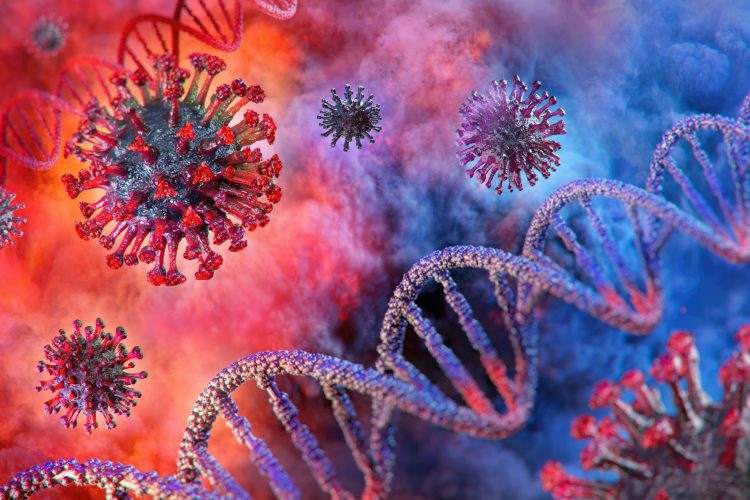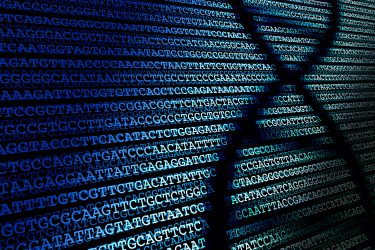Intravenous immunoglobulins, hyperimmunes and pandemic viruses
Posted: 4 May 2020 | Hannah Balfour (Drug Target Review) | No comments yet
David Johnson of GigaGen discusses how recombinant forms of intravenous immunoglobulins (IVIG) could overtake current IVIG therapies and be used in the treatment of COVID-19.


In light of the recent COVID-19 pandemic there has been a rush to develop therapeutics to combat the SARS-CoV-2 coronavirus causing the disease and, most recently, a discussion about the possibilities of using convalescent plasma as a treatment for severe COVID-19 patients.
However, blood plasma is an extremely limited resource with supplies hard to come by, even without the restrictions and safety concerns of COVID-19 at play. Here, Drug Target Review’s Hannah Balfour holds a Q&A with GigaGen Inc.’s co-founder and Chief Executive Officer, David Johnson, about how the company intends to overcome these issues and provide a renewable immunotherapy product using recombinant blood, plasma and antibody products.
What are intravenous immunoglobulins and hyperimmunes and why are they used?
Intravenous immunoglobulins (IVIG) and hyperimmunes are used for treating a number of conditions. One of their main applications is immunodeficiency; they are used to treat patients who cannot make the right antibodies or do not produce enough antibodies, like the elderly, and therefore need a supplement.
To create IVIG products, companies collect plasma from ‘healthy’ donors, pool it together and extract antibodies from the plasma. These antibodies become the final drug – essentially an antibody supplement.
Hyperimmunes are a variant of IVIGs, where companies extract antibodies after a person has been vaccinated for a particular condition. The vaccine increases the antibody titer, or how many antibodies are in the blood. For instance, a company may vaccinate for Hepatitis B and then collect the plasma, those donors will have more antibodies that can target Hepatitis B and the resultant product will have greater efficacy against that condition. Hyperimmunes therefore work with similar principles to IVIG, except while IVIG products contain a range of antibodies against a host of conditions, hyperimmunes target a particular pathogen.
How could intravenous immunoglobulins and hyperimmunes be used to target COVID-19?


Researchers have suggested that convalescent plasma, or convalescent serum, could be used as a potential treatment for COVID-19. Essentially this entails extracting plasma from patients who have recovered from COVID-19 and infusing it directly into another patient still fighting the disease. The principle is similar to that of a hyperimmune in that, if they are recently recovered, the donor’s blood plasma should contain higher numbers of antibodies specifically targeted to COVID-19.
However, directly administering plasma in this way has several issues, especially as plasma is a finite resource and companies often struggle to collect enough for IVIG products.
How could the shortage of convalescent, or general, plasma for these products be overcome?
This is where our novel single-cell technology comes in. We have created a platform that allows us to take donated B cells, which produce antibodies, from the blood of a patient and collect the DNA from single cells. The nucleic acid sequences are then converted into protein libraries. Through this process, the donor’s repertoire is immortalised and can then be made into a recombinant polyclonal antibody product to treat the condition.


Our thinking is that this makes a finite resource effectively renewable; instead of one donated unit of plasma treating possibly one other patient, a single donor can treat millions of people.
Of note, unlike normal plasma products, which require companies to continue to collect from donors to supply the demand, recombinant antibody products only require collection until a suitable antibody profile is found. If we find that one or two samples have a suitable range of antibodies to combat a disease, then we can stop collecting.
Have you used the single-cell technology to develop drugs for COVID-19?
We collected blood from convalescent COVID-19 patients and ran it through our system, looking for donors who have the highest antibody titer against the SARS-CoV-2 coronavirus, which causes COVID-19. From that small number of donors, we have created the recombinant anti-coronavirus 19 hyperimmune gammaglobulin (rCIG) product.
Although creating the product is not an issue, finalising its production is. Attaining production slots with contract development and manufacturing organisations (CDMOs) is challenging, as there is always a queue of products waiting to be made.
What developments are you excited about in the intravenous immunoglobulin field?
In addition to the part of the antibody that binds the pathogen, I am particularly interested in engineering and modifying the part of the antibody that modulates immune function, known as the immunoglobulin G (IgG) isotype.


An antibody is not just an antibody; in addition to the sequence that binds to a pathogen or oncology target, the rest of the antibody interacts with the immune system to drive different responses. The IgG isotype is what informs the reaction of the immune system and this is very important when treating disease.
Severe COVID-19 symptoms, for instance, are caused by cytokine storms driven by two particular IgG isotypes: IgG1s are produced in response to protein antigens and bind to natural killer (NK) cells to drive the destruction of cells and IgG2 isotypes are produced in response to carbohydrate antigens and activate macrophages to engulf and destroy cells through phagocytosis. These two isotypes may drive the pathology of the COVID-19 virus, where a patient’s own antibodies bind to the virus and, through a sequence of signals, cause an overproduction of cytokines that kill both the virus and patient.
This is important, because if you take convalescent plasma and administer it you may induce a cytokine storm that further harms the patient. With a recombinant product you can engineer it to avoid the side effects associated with particular IgG isotypes.
This has never been done before for a recombinant polyclonal and while polyclonal products have many advantages over monoclonal ones, dependent on the application, this type of isotype engineering could create more effective targeted therapies, which are likely to have fewer side effects.
What can we learn from the current pandemic?
Scientists working in the field of emerging pathogens have been warning about the possibility of a pandemic like COVID-19 for decades, but unfortunately there is limited funding for diseases without political importance, like those seen in poorer countries. While previously we have been lucky not to have global outbreaks of other coronaviruses, including Severe Acute Respiratory Syndrome (SARS) and Middle Eastern Respiratory Syndrome (MERS) and diseases like Ebola and Zika virus, I hope we will be more prepared in future.
As part of an insurance policy, many believe governments should channel funding into R&D for emerging pathogens as well as more common conditions like cancer. It is not necessarily about high levels of research into a specific disease, but instead we need to have the technology and therapeutic strategies in place to aid the formulation of a rapid response in future.
Related topics
Antibodies, Biologics, Disease research, Drug Development, Drug Targets, Genomics, Immunology, Research & Development, Screening, Sequencing, Therapeutics
Related conditions
Coronavirus, Covid-19, Immunodeficiency
Related organisations
GigaGen Inc.
Related people
David Johnson


